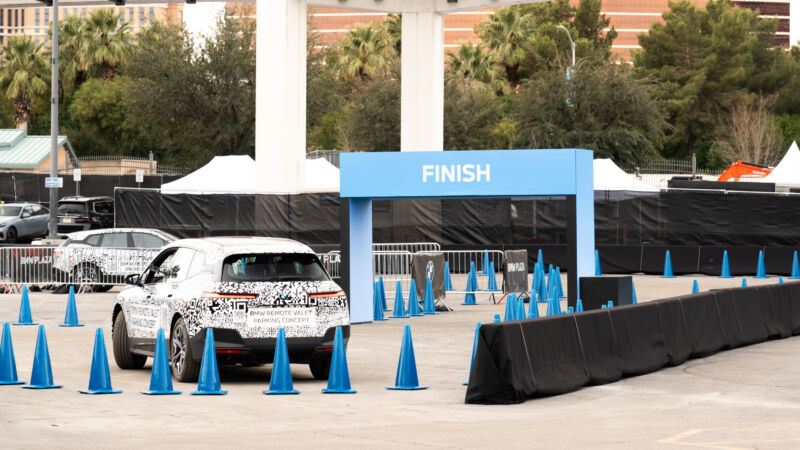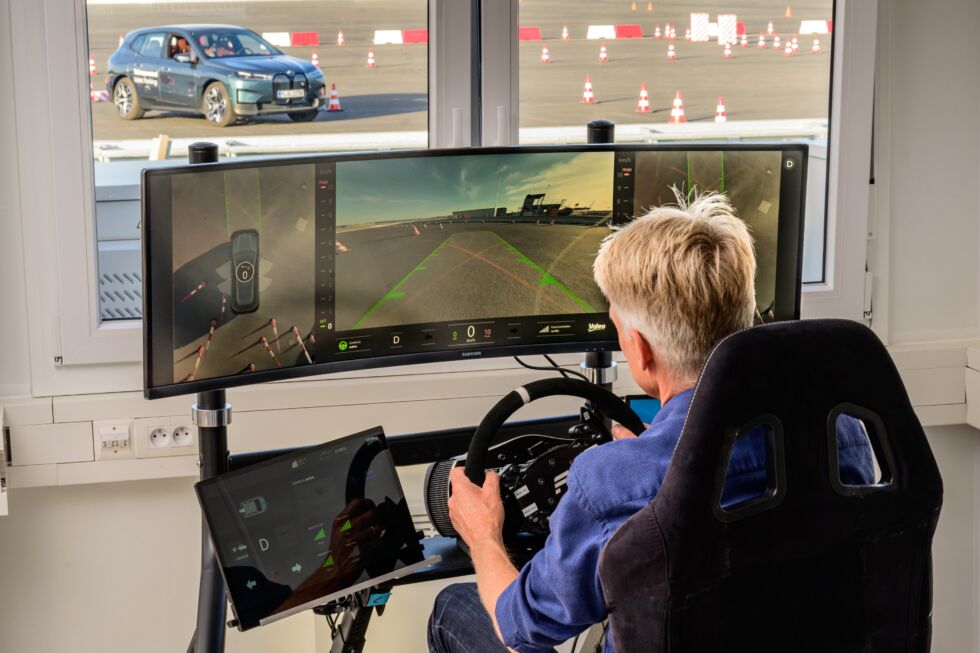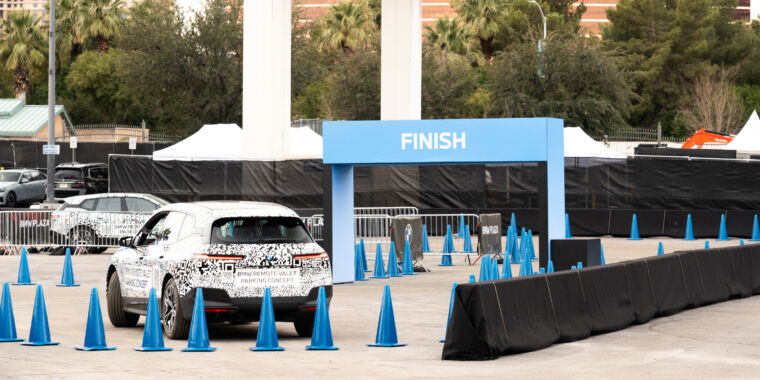I parked a BMW from across the parking lot at CES 2024

Enlarge / Until now, remote parking systems have mostly required the parking lot or garage to fit expensive sensors and equipment. BMW’s approach is different, requiring nothing that isn’t already on the car.
Tim Stevens
If I had a dollar for every automated self-parking demo I’ve seen over the years, many of which happened at CES, I’d probably have enough money to tip a Las Vegas valet, folks whose jobs are still very secure.
But that might actually be changing soon. Given all those earlier demos that went nowhere, I wasn’t particularly enthused when I heard that BMW and Valeo were demonstrating yet another implementation of a car parking itself for the 2024 CES in Las Vegas.
However, after a quick chat with the folks behind the technology and getting a chance to try it myself, I realized I was wrong. Remote Valet is impressive not only for what it can do but because it does it without any technology more advanced than what’s already found in today’s production cars.
The core concept is a simple one. You pull up to the entrance of wherever you want to go. Instead of dealing with the drudgery of parking your own car or risking paying to let some red-vested teenager take your car for a joyride, you get out, tap a button in the My BMW app, and walk away.
The car parks itself, and when you’re done, you just open the app, tap the button again, and the car magically returns to pick you up.
The secret is that the car is not truly parking itself. This isn’t a limited case of driving autonomy. You’re actually handing over control of your car to a real human sitting in a sort of call center full of sim racing rigs.

Enlarge / BMW’s remote operators use high-end sim racing equipment to control the cars remotely.
BMW
That person then remotely pilots your car, using footage livestreamed from the 360-degree cameras in the car. That streaming happens courtesy of the car’s wireless connection, which also returns the driver inputs back from the call center to the vehicle.
It’s a mechanical Turk situation, with a driver very much in the loop, though not within the car—nor, necessarily, within the state. That vastly reduces the complexity of the situation, so much so that this technology could theoretically be deployed very soon, potentially even pushed to current BMWs via an over-the-air update. It relies entirely on sensors and antennas already built into cars.
No new hardware needed
Indeed, at CES 2024, the demo machines were BMW iX SUVs. They had additional developer-specific hardware inside since they’re test vehicles, but I was told that once the software is final, no additional hardware will be necessary. So unlike other automated parking demos that require things like beacons within garages for locational positioning, perfectly pristine paint markers on the road, or, indeed, high-resolution maps of the entire lot, this solution just requires butts in seats and a reasonably good wireless connection.
At the show, I was able to remotely pilot one of the iX SUVs. BMW had set up a surprisingly high-end sim racing rig, a Fanatec DD2 wheel plus Clubsport pedals. All this was overkill, given that the maximum speed for a car remotely piloted like this is 10 km/h, or about 6 mph.
I parked a BMW from across the parking lot at CES 2024 Read More »
